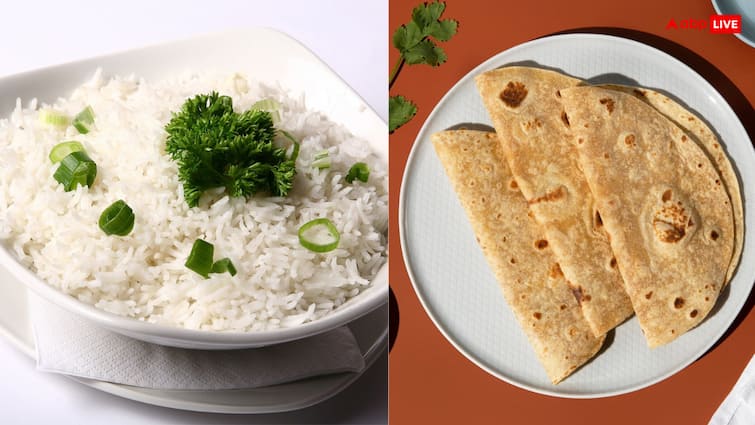Roti and rice are both staples in our diet, but when it comes to gaining or losing weight, which one should you choose? This question often comes to people’s minds, especially when they are trying to lose weight. Both roti and rice contain carbohydrates, but there is a difference in their nutrition and calories. Today, we will know which one is more effective for gaining weight and if you are losing weight, which option will be best for you.
Difference between roti and rice
Both roti and rice are high in carbohydrates, but there is some difference between them. A medium-sized roti contains about 70 to 80 calories, while a bowl of white rice contains about 200 to 240 calories. This means that by eating rice, you are getting more calories, which can contribute to weight gain.
What is best for weight loss?
If you want to lose weight, eating roti can be a better option. Roti is rich in fiber, which makes you feel full for a long time. Due to this, you will not feel hungry again and again and will eat less. Apart from this, roti also provides nutrition due to wheat, which is not present in rice.
On the other hand, if you like eating rice, brown rice may be a better option. It contains more fiber and is digested slowly, which helps your stomach stay full for longer. But compared to white rice, brown rice provides fewer calories and more nutrients.
Important points
Roti and brown rice can be good options for weight loss, but white rice should be avoided as it contains more calories. By including roti and brown rice in your diet, you can lose weight in a healthy and balanced way. Also, remember to consult your doctor or dietitian before making any changes.
Nutrients present in 100 grams of rice
- Calories: approximately 130 calories
- Carbohydrates: 28 to 30 grams
- Protein: 2.5 to 3 grams
- Fats: 0.2 to 0.3 grams
- Fiber: 0.5 to 1 g
- Vitamins: traces of vitamin B, niacin, thiamine
- Minerals: calcium, magnesium, iron
- Calories: About 340 to 350 calories
- Carbohydrates: 72 to 75 grams
- Protein: 12 to 13 grams
- Fats: 1.5 to 2 grams
- Fiber: 10-12 grams
- Vitamins: Vitamin B1, B3, B6
- Minerals: Iron, magnesium, phosphorus
li> li>
< /ul >
Nutrients present in 100 grams of wheat flour
The biggest difference between these two is the amount of fiber and protein. Flour contains more fiber and protein, making it better than rice in terms of nutrition.
Disclaimer: Some information provided in the news is based on media reports. Before implementing any suggestion, you must consult the concerned expert.
Full Body Checkup: Is a Full Body Check Useless, Report Reveals
